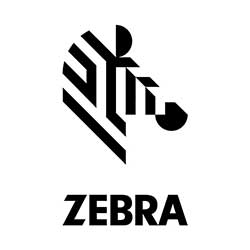
Think It’s Time to Cut the (Scanner) Cord?
In a recent blog post, a few AIDC experts debated whether it makes more sense for retailers, restaurant operators, healthcare providers and others to install hands-free barcode scanners in their facilities or give workers and customers handheld scanners. Yet, we realize many of you are also weighing the pros and cons of corded versus cordless scanners as you plan your next technology upgrade.
You might be asking, “What’s the difference between handheld/hands-free and corded/cordless?”
Well, the choice between a handheld or hands-free scanner is based on whether you can bring barcoded items to the scanner or need to bring the scanner to the items being scanned. And the decision to go with a corded or cordless scanner has to do with your connectivity needs. Do you want the scanner to be tethered with a cord so it is restricted to a particular station? Or do you need a truly mobile scanner, in which a cordless scanner with Bluetooth® capability is best?
We have reconnected with Amanda Barkan and Brian Walters, and asked Ron Ethe to join the conversation, so we can further breakdown the benefits of cordless versus corded barcode scanners:
Your Edge Blog Team: In the past, corded scanners dominated the scanner market. Is that still the case? Or do you see a shift toward cordless scanners now that industries are under more pressure to increase the speed and efficiency of tasks?
Ron: Cordless scanners are certainly becoming popular. For example, in-aisle and backroom inventory scans are being conducted at a higher frequency than ever, and regular price checks and updates rely on both item and shelf label scans. Though some store associates may have rugged mobile computers with built-in barcode scanners in hand to complete these types of tasks, associates dedicated solely to inventory counts may only need a cordless handheld barcode scanner to be most efficient and successful at their jobs. But I wouldn’t say we’re going to see everyone “cut the cord,” so to speak. There are still many instances where cordless scanners aren’t needed. For instance, occasional scanning of small items likely wouldn’t require Bluetooth flexibility.
Your Edge Blog Team: What about in healthcare? Wouldn’t cordless scanners almost always be the preference considering how barcode scanners are used at the bedside and beyond? Or do you find there are still valid use cases for corded scanners?
Brian: Generally speaking, cordless scanners are now more prevalent in healthcare environments than corded scanners, especially at the bedside. With infection prevention at an all-time high, many hospitals see cordless scanners as a way to minimize cross-contamination, as clinicians don’t have to worry about cleaning a cord that may come into contact with multiple surfaces or accidentally touch a patient when being used. Of course, all of our healthcare scanners can be disinfected to medical grade standards, and there is both a blog post and website that explain what to use and how to clean the scanners thoroughly. But there is a strong case for cordless scanners in many healthcare settings given this strong focus on infection prevention.
That said, there are still some cases in which corded scanners might be a viable, and even preferable, option. For example, corded scanners are still commonly used at patient admission stations and in labs. Some scanners used at patients’ bedsides are still corded, too. The form factor really depends on the preference of clinicians and decision makers, as well as budget.
Your Edge Blog Team: What would you say to those who are worried about cordless scanners walking away?
Amanda: We have a feature called Virtual Tether which helps prevent cordless devices from being misplaced. The scanner will sound an alarm, blink and vibrate when it gets too far from its base. There’s a great overview of how it works and its benefits in this blog post from our colleague Greg Carras.
Your Edge Blog Team: Are there any other differences in functionality besides the maneuverability aspect?
Brian: There is a difference in how edge data is sent back to information systems. A corded scanner is connected by a cable somehow, often via USB, RS-232, TGCS (IBM) 46XX over RS-485 port or even a Keyboard Wedge. So, it’s a wired data transmission. But cordless devices can send data via Bluetooth directly to the host system, or to a cradle which is still cabled to the host system. The latter is more popular. Either way, the good news is that organizations have the flexibility to push this data in real time or batch the data depending on their needs.
Ron: I know some customers also ask about the power capacity of cordless scanners since they aren’t always plugged in and recharging. However, there is a wide range of options available, including supercapacitors and batteries. Even better, the Zebra DS8100 Series offers swappable power sources so you don’t have to choose. Additionally, if anyone has "cordless concerns" related to battery management, we have smart batteries that tell you about battery health so you can take preemptive measures to recharge or replace batteries before performance starts to lag.
Your Edge Blog Team: During our last discussion, we concluded that most organizations don’t have to choose between handheld or hands-free scanners anymore thanks to new hybrid and convertible scanners that can transform between form factors. So, does that mean they don’t have to choose between corded and cordless scanners anymore, either?
Brian: Technically, yes. The Zebra CS60 Series Scanner can convert from corded to cordless – and handheld to hands-free modes – within seconds, making it extremely versatile. Convertible barcode scanners can accommodate and adapt to many different workflows.
Your Edge Blog Team: Are these adaptable scanners the right option for everyone, though? Are they the “one-size-fits-all” solution for businesses that need scanners to verify people’s identities, tickets and memberships or process loyalty points and payments?
Amanda: They are ideal for situations where you may not know what you will need next and desire that flexibility. But there are still very valid use cases for more traditional handheld barcode scanners, too. There isn’t a one-size-fits-all approach to barcode scanning.
Your Edge Blog Team: It sounds like those who decide it’s time to cut the cord can do so confidently knowing they won’t lose any functionality. And those who aren’t quite ready to cut the cord have the option to install corded or hybrid scanners.
Brian: That’s right. Zebra has a broad portfolio of options to meet every customer’s scanning needs. We’ve mentioned a few here and in our last blog discussion, but there are many more.
Your Edge Blog Team: What advice do you have for those who are ready to cut the (scanner) cord? What should they look for in a cordless scanner?
Amanda: They should look for cordless devices with advanced features such as smart batteries to manage battery health, power gauges that show charge status at-a-glance and on demand, as well as swappable power sources that can adjust with changing needs. It’s also important to confirm that a variety of charging cradles and accessories are available, including cradles that can be mounted to a wall, desk or countertop and those that can be used to enable presentation scanning.
Your Edge Blog Team: In other words, prioritize “power.”
Ron: Exactly. Devices must be able to power through long shifts without needing to recharge, and no one can afford for their device to die suddenly because the battery was draining unnoticed.
Brian: Along those same lines, it’s also important to choose devices with a Virtual Tether feature so they don’t accidentally walk off the premises or get misplaced. Scanner availability and uptime are critical to the front-line workers for whom these devices are intended. And be sure you choose a scanner with AutoConfig, as it will make it so much easier for your operations managers and IT teams to adapt the devices to different workflows as business demands change.
Amanda: It’s also important that you understand the device management requirements for each scanner and the tools available to ease that burden on IT, operations managers and even end users. Scanners, like other devices, need to be routinely configured, secured and updated, and their performance and health must be monitored. If you are using Zebra scanners, you can feel good that you’ll have what you need to capably manage the devices with minimal in-house resources. The DataCapture DNA tools we’ve developed are specifically designed to ease device (or fleet) deployment, management and more. We have a lot of information on our website about these capabilities because, from our perspective, they are just as critical to our customers’ return on investment as the scanner’s usability, flexibility and longevity.
###
Related Insights:
- Ever Wonder Why Zebra Mobile Computers, Scanners or Printers are Just Easier to Deploy, Manage and Use Than Others? Or Why They Last Longer?
- Good News, Retailers: You No Longer Have to Buy New Scanners Every Time Your Workflows Change. The New Zebra CS60 Series Convertible Scanner Can Take on Any Form and Task You Need It To!
- Sound the Alarms: You Won’t Have to Waste Time or Money on Missing Barcode Scanners Anymore
- Healthcare Processes, Patient Needs and Reporting Requirements are Changing Faster Than Ever. That’s Why Clinicians Need More Adaptable (and Patient-Friendly) Technology.

Zebra’s “Your Edge” Blog Team
The “Your Edge” Blog Team is comprised of content curators and editors from Zebra’s Global PR, Thought Leadership and Advocacy team. Our goal is to connect you with the industry experts best-versed on the issues, trends and solutions that impact your business. We will collectively deliver critical news analysis, exclusive insights on the state of your industry, and guidance on how your organization can leverage a number of different proven technology platforms and strategies to capture your edge.




